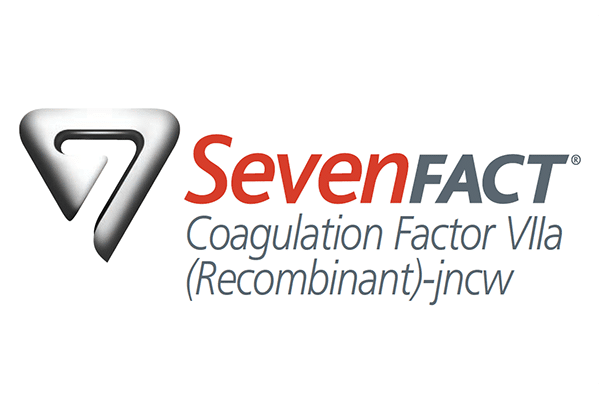Paul Clement
Factor from rabbits you say? Yes! On April 1, 2020, The Food and Drug Administration (FDA) granted approval of a new recombinant factor VII (FVII) product—Sevenfact—to France-based LFB Biotechnologies Group.1 In the US and Canada, Sevenfact is sold exclusively by HEMA Biologics, a Louisville, KY-based biopharmaceutical company.

Until now, all recombinant factor concentrates were produced by inserting a gene for a human clotting factor into mammal cells, which then gives the cells the ability to make human factor. These “transgenic” cells, such as BHK cells (baby hamster kidney); CHO cells (Chinese hamster ovary); or more recently, HEK-293 cells (human embryonic kidney), are then grown to great numbers in large stainless-steel tanks called bioreactors. As the cells grow in the liquid culture medium in the bioreactor, they secret factor into the liquid, some of which is periodically drawn off, purified, concentrated and eventually processed into clotting factor concentrate.
Enter Sevenfact.2 The production of Sevenfact does not involve the use of cell lines and bioreactors, but instead involves rabbits. The rabbits are genetically engineered—given a copy of the human gene for FVII that is designed to be expressed in the mammary gland and secreted into the rabbit’s milk. During the separation and purification process of the FVII, the factor is activated, producing activated FVII, or FVIIa.
Why rabbits? Clotting factors are complex proteins. And although genetically engineering a cell by adding a gene for human factor may confer it with the ability to produce human factor, the factor is not fully functional until it is “finished” or modified by the addition of different compounds and folded into a specific shape. This modification process is largely dependent on the type of cell making the factor and most animal cells are not capable of properly finishing human factor proteins. Rabbits do the best job of making factor very close to how humans make factor. In other words, rabbits produce very “human like” factor, which may also have an added benefit of decreasing immunogenicity (the likelihood of producing inhibitors). Rabbits have several other advantages as well: they are small, reproduce rapidly and their milk has a high protein content, meaning they produce more factor than other animals when comparing the same volume of milk.
Producing factor in bioreactors is a rather inefficient process. Rabbits do this much more efficiently and at a much low cost—they do not require large, expensive, highly complex facilities to house bioreactors, and unlike conventional facilities that take years to plan and build, production can be rapidly scaled up. Rabbits can produce 200 milliliters of milk per day, or nearly 7 ounces, and they lactate for about three weeks. A single rabbit can produce about 1 to 1.5 liters of factor-rich milk per lactation period, for a yield of 10–15 liters of milk per year. And they do not have seasonal reproductive cycles that would limit milk production as do many other animals.
Sevenfact is very similar to another recombinant FVIIa product on the market called NovoSeven RT (Novo Nordisk). Sevenfact is a bypassing agent, meaning it’s indicated for the treatment and control of bleeding episodes occurring in adults and adolescents 12 years of age and older with hemophilia A or B with inhibitors (neutralizing antibodies to FVIII or FIX).

In addition to FVIIa, there is also another bypassing agent on the market for people with hemophilia A or B with inhibitors: FEIBA (Takeda), which is a plasma-derived activated prothrombin complex concentrate (aPCC). And in 2017 the FDA approved a novel antibody therapy called Hemlibra, which can be used for prophylaxis in people hemophilia A, with and without inhibitors (it’s not used to treat bleeds).3
Hemlibra has revolutionized the treatment of hemophilia A with inhibitors because it dramatically reduces the frequency of bleeds—but people may still have breakthrough bleeds, requiring the use of a bypassing agent. In clinical trials of Hemlibra, patients who used FEIBA at doses greater than 100 U/kg/24 hours sometimes developed unwanted blood clots, but no such adverse event was found in patients on Hemlibra treating bleeds with rFVIIa. Because of this concern, many patients on Hemlibra prophylaxis instead prefer a rFVIIa, such as SevenFact. LFB has conducted laboratory tests of Hemlibra and SevenFact, and is currently enrolling patients on Hemlibra in a clinical trial using SevenFact to treat breakthrough bleeds.4
For more information on Sevenfact, visit the HEMA Biologics website at: https://hemabio.com/
This is an original article with no corporate sponsor input or funding.
1. LFB Biotechnologies Group: Laboratoire Francais du Fractionnement et des Biotechnologies 2. Coagulation FVIIa [recombinant]-jncw or eptacog beta). 3. (emicizumab-kxwh [Hoffman‐La Roche]) 4. https://onlinelibrary.wiley.com/doi/full/10.1111/hae.14253

